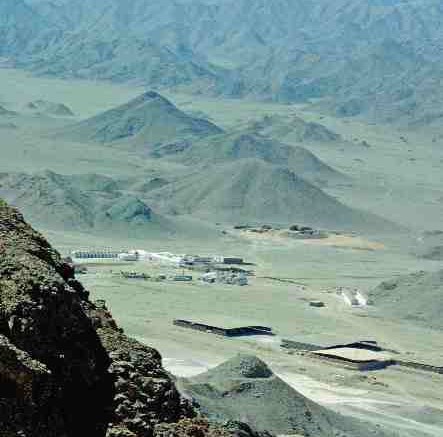SPECIAL TO THE NORTHERN MINER
Perth, Australia — With its third listing, this one on the Toronto Stock Exchange in April, Western Australia-based Centamin Egypt (CEE-T, CEY-L, CNT-A) could be opening the final doors to becoming a major gold producer.
Centamin Egypt was first listed on the Australian Stock Exchange in 1973 as Centamin, then late in 2001 on London’s AIM Board.
The company is pioneering modern gold mining in Egypt at Sukari, near the Red Sea tourist city of Marsa Alam, on one of the largest new gold projects set for production late next year.
The TSX move was not only important for Centamin Egypt in terms of placing it on one of the markets most appreciative of miners, but it also raised $140.71 million to coincide with its entry on the exchange with Westwind Partners as its financial adviser.
In mid-April, the company also appointed Barclays Capital as lead arranger for a US$100-million financing.
Centamin managing director Josef El-Raghy says that the company’s shares have appreciated on the 86 placement price (AIM and ASX-listed shares have also seen an increase), but the big injection of development capital will alter Sukari’s debt to equity ratio to about 1:1 from 7:3. The project is expected to cost US$200 million to develop.
Based on late April ASX trading, Centamin’s market capitalization has soared to A$770.64 million ($717.61 million).
El-Raghy, who ran research and trading divisions for Australian stock-broking firms before taking over the management role from his father Sami four years ago, says Canadian investors now represent about 22% of the company’s global shareholders — and rising rapidly. United Kingdom shareholders account for 60% and Australian investors represent 18%, of which 14% are held by management and friends.
Company chairman Sami El-Raghy, a geology graduate from Egypt’s Alexandria University, spent years discovering and helping develop large low-grade gold deposits in Western Australia’s remote northeastern goldfields, and he took the company to Egypt with a focus on Sukari and its surrounding area.
Son Josef had a tough initiation in the management chair when, four years ago, Egypt’s then minister in charge of mining, Ali El Saledi, inexplicably demanded all work at Sukari cease.
President Mubarak has since made sweeping ministerial changes, with El Saledi replaced by Engineer Sameh Fahmy, who also became Petroleum Minister. Fahmy, who has become well known in the finance world for driving the country’s oil and gas exploration forward, has made it clear that Sukari will become a model for expanding mineral development in the country.
Once the political shackles were removed, Centamin Egypt got the drill rigs running again and completed other major studies, dramatically increasing proven resources and reserves at Sukari. At one end, where the advanced Amun deposit sits, Sukari is a hill rising from the desert floor; at the other end, where the Pharaoh zone sits, it is a mountain, where drilling has been slowed by the simple issue of elevation.
Sukari now has a JORC-compliant measured and indicated resource of 121 million tonnes at a grade of 1.39 grams gold per tonne, based on a cutoff grade of 0.5 gram per tonne. So profound has been the advance that the last upgrade of more than 500,000 oz. gold was at a discovery cost of US$4 per oz. Sukari has an inferred resource of 53 million tonnes grading 1.7 grams per tonne. The reserve, at a stripping ratio of 4.8, is 78.3 million tonnes grading 1.5 grams per tonne. The company has 10 rigs drilling, but the focus has been moving from the need to prove up more reserves to sterilizing areas for the gold plant and other infrastructure.
While the porphyry systems provide large, low- to medium-grade systems, there is growing evidence of more high-grade zones apart from the well-defined Hapi zone, which extends for a known 900 metres through the Amun and Ra zones.
Drilling into the desert floor has intersected highlights of: 3 metres grading 441 grams gold per tonne and 111 metres at 15.06 grams in the Gazelle zone; 1 metre averaging 185 grams and 74.5 metres at 4.63 grams in Amun; and two 1-metre sections in Ra of 573 grams and 49.8 grams gold, respectively. There was also one intersection in the Ra zone that graded 3.69 grams gold over 43 metres from surface.
Now making its way to Egypt is a gold plant purchased from Newmont Mining’s (NMC-T, NEM-N) closed Kori Kollo mine in Bolivia, that comes with a carbon-in-leach circuit as well as gravity separation and a sulphur dioxide cyanide destruction plant. With ancillary equipment, the plant will initially handle 4 million tonnes per year to produce 200,000 oz. gold.
The mine life of the first mining area, the Amun open pit, is estimated at nine years, with a 4-million-tonne-per-year treatment rate. Production should be up to full capacity by 2009, ramping up to about 40,000 oz. in the last quarter of 2008.
— Based in Perth, Australia, the author is a freelance writer specializing in mining.


Be the first to comment on "TSX Listing a Stepping Stone for Centamin Egypt"